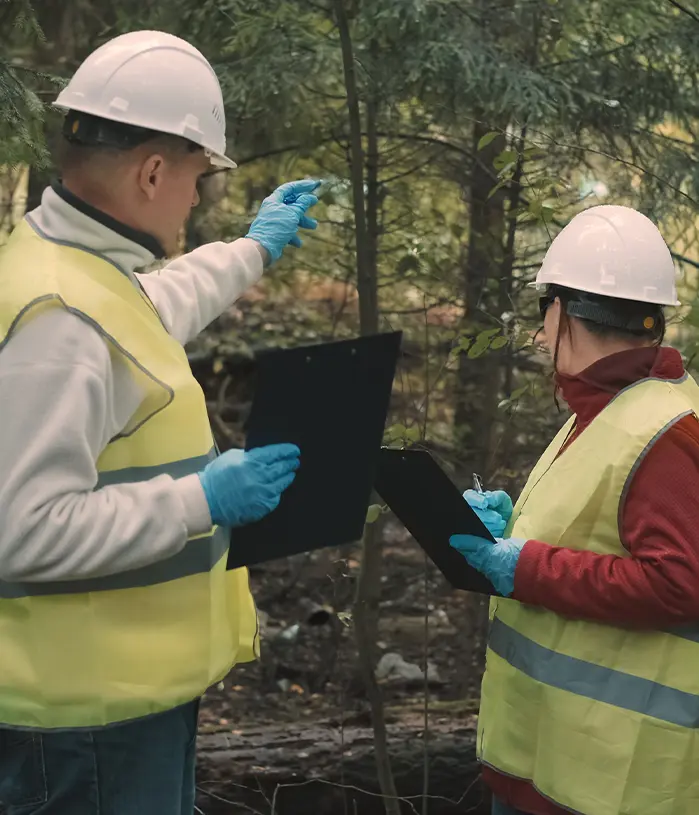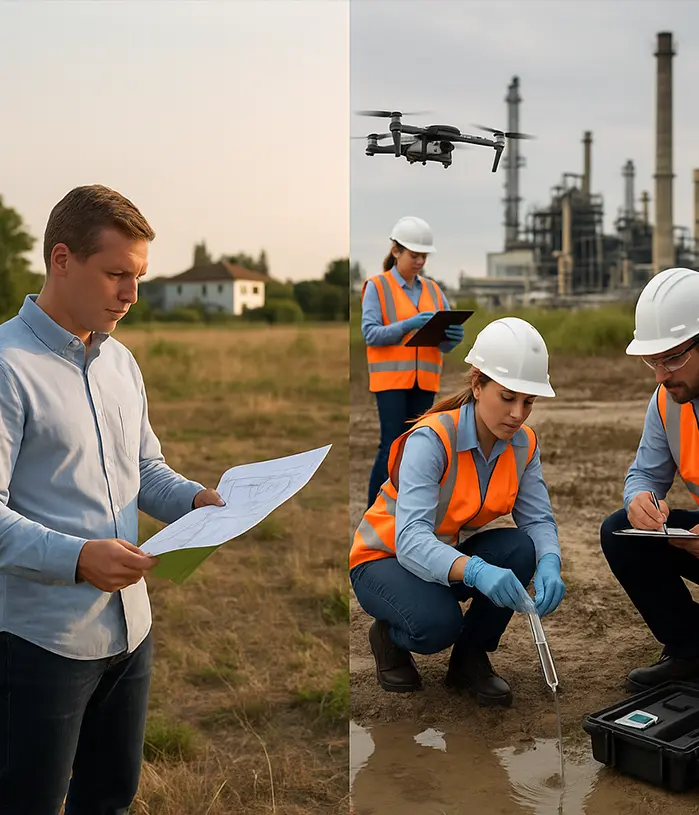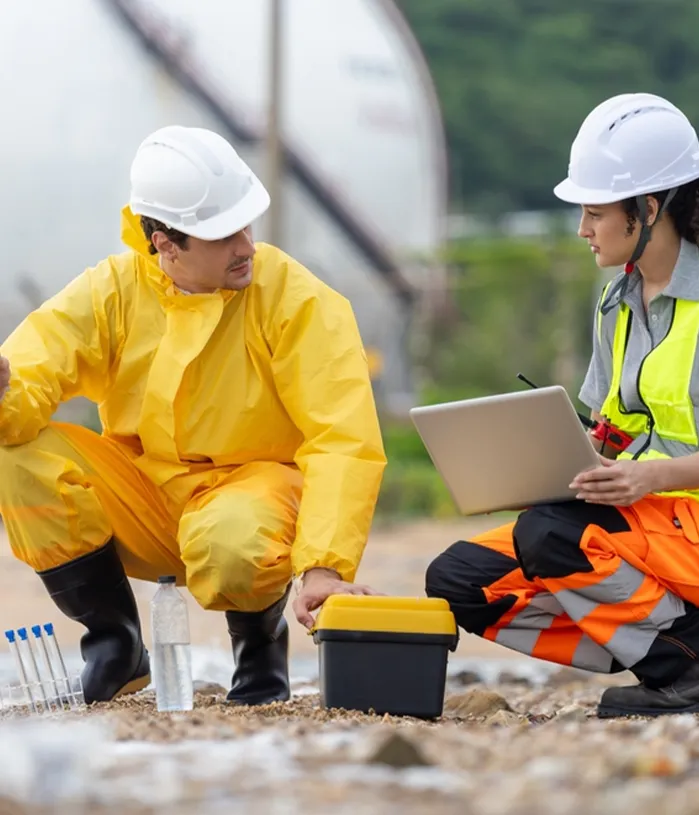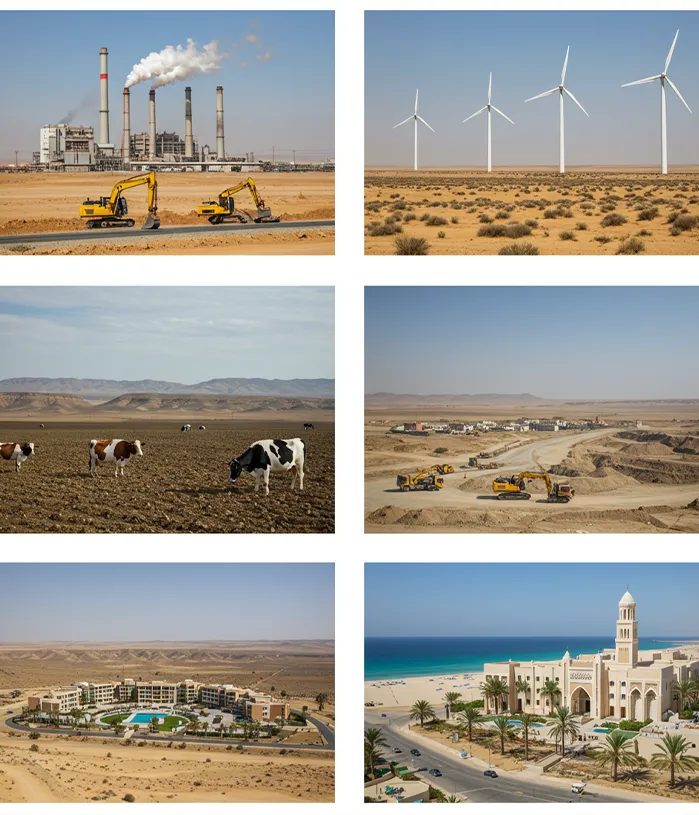Environmental Impact Assessment: A Key Step Towards Sustainable Projects
An Environmental Impact Assessment (EIA) is a comprehensive scientific procedure that aims to analyze the expected environmental impacts of any activity prior to its implementation. It is a prerequisite for obtaining an environmental license in the Kingdom. This assessment forms a pivotal part of the environmental framework approved by the National Center for Environmental Compliance. It is widely applied to assess the environmental impact of industrial projects, public facilities, and even residential activities.
Whether you are establishing a new facility or conducting an EIA study for a factory, this procedure helps reduce emissions and harmful impacts on the environment and public health, while providing proactive solutions and effective management plans. It also reflects the facility's commitment to sustainable development and enhances its credibility with official bodies.
Within the framework of Saudi Vision 2030, EIA is a strategic tool to ensure that projects grow responsibly and in compliance with national environmental standards.




Services we provide in environmental impact assessment:
For projects with limited impact, as a first step within the environmental framework and a condition for obtaining an environmental permit.
For major projects with high impact, including environmental impact assessment of industrial or development projects, as part of the requirements for obtaining an environmental license.
Including measurements of air, soil, water, noise, and biodiversity, as an essential part of an environmental impact assessment study for a factory or an environmental impact assessment for a residential project.
Identifying risks and the necessary measures to mitigate them, ensuring compliance with the environmental framework and environmental impact assessment requirements for hospitals and public facilities.
To organize environmental control mechanisms and ensure compliance during project implementation and operation, thus supporting the issuance of an environmental permit for the project.
Preparing detailed reports that comply with environmental impact assessment standards for projects and meet all regulatory requirements.
Providing full technical support to clients during the environmental impact assessment study stages for a factory or any project requiring an environmental license.
The difference between initial and detailed environmental assessment
The Initial Environmental Assessment (PEIA) is a key exploratory phase within the Kingdom's environmental framework. It is applied to projects with low or medium environmental impact, such as the Environmental Impact Assessment (EIA) for a residential project. This assessment aims to determine the need for a detailed assessment by gathering preliminary information about the project and its location, and a preliminary analysis of potential environmental impacts, without the need for complex or lengthy field studies. In some cases, this assessment may be used as a step toward obtaining an initial environmental permit.
The Detailed Environmental Assessment (DEIA) is intended for projects with significant and complex environmental impacts, such as the EIA of a factory or the EIA of a hospital. This type of assessment includes thorough field and technical studies covering all environmental elements, such as air, water, soil, and biodiversity. It also includes a comprehensive risk analysis and the development of an integrated environmental management plan. Conducting this assessment is a mandatory requirement for obtaining a final environmental permit according to the EIA for major projects in Saudi Arabia.




Steps for preparing an environmental impact assessment report:
The type of project, its activities, and its geographical location are studied to determine the environmental scope in accordance with the approved environmental framework, whether it is an environmental impact assessment for a residential project or an environmental impact assessment study for a factory.
This includes collecting detailed data on the surrounding environment (air, water, soil, biodiversity), which is a necessary step in the environmental impact assessment of major projects, including the environmental impact assessment of hospitals.
Analyzing the positive and negative impacts of the project throughout all its phases, in line with environmental licensing requirements and supporting the integrity of the environmental impact assessment.
Identify the necessary measures to avoid or reduce harmful environmental impacts, in line with the environmental framework and supporting the acquisition of an environmental permit for the project.
Designing a comprehensive environmental monitoring and follow-up plan that ensures project compliance during implementation and operation, and is an essential part of assessing the environmental impact of industrial or development projects.
The final report is prepared in an approved format that complies with the regulations of the National Center for Environmental Compliance Control, and covers all stages of the environmental impact assessment study for a factory or any project requiring an environmental license.
The report is submitted to the relevant authorities to complete the environmental approval procedures, which are necessary to issue an environmental permit and begin project implementation.
The importance of assessing the environmental impact of projects and factories:
Environmental impact assessments are a pivotal step in ensuring that industrial and investment projects in the Kingdom are implemented in a responsible manner and in compliance with the national environmental framework. It is not merely a regulatory measure; it represents a strategic tool for reducing risks and achieving a balance between economic development and environmental conservation.
- Detects environmental impacts before implementation and avoids future surprises.
- Assists organizations in developing effective environmental plans to protect resources.
- Contributes to enhancing public safety and health within the project area.
- Reflects the entity's commitment to environmental responsibility and sustainable development.
- Increases the project's credibility with investors and regulators.
- It is easy to obtain official licenses and approvals from the relevant authorities.




Types of projects that require an environmental impact assessment:
- Cement, petrochemical, paint, battery, plastic factories.
- Recycling plants, slaughterhouses, large food factories.
- Water and wastewater treatment plants.
- Conventional power plants (fuel/gas).
- Renewable energy projects (wind, solar, green hydrogen).
- Large farms, poultry and livestock farms, greenhouses.
- Aquaculture and industrial fishing projects.
- Tourist resorts, eco-hotels, major entertainment facilities.
- Huge commercial and industrial centers.
- Mines, crushers, drilling and prospecting sites.
- Secretariats and municipalities when implementing road projects, waste stations, and public parks.
- Government agencies when developing vital facilities or expanding infrastructure.
- Construction projects for educational or health institutions.
Contact Us
For more information, please contact us
